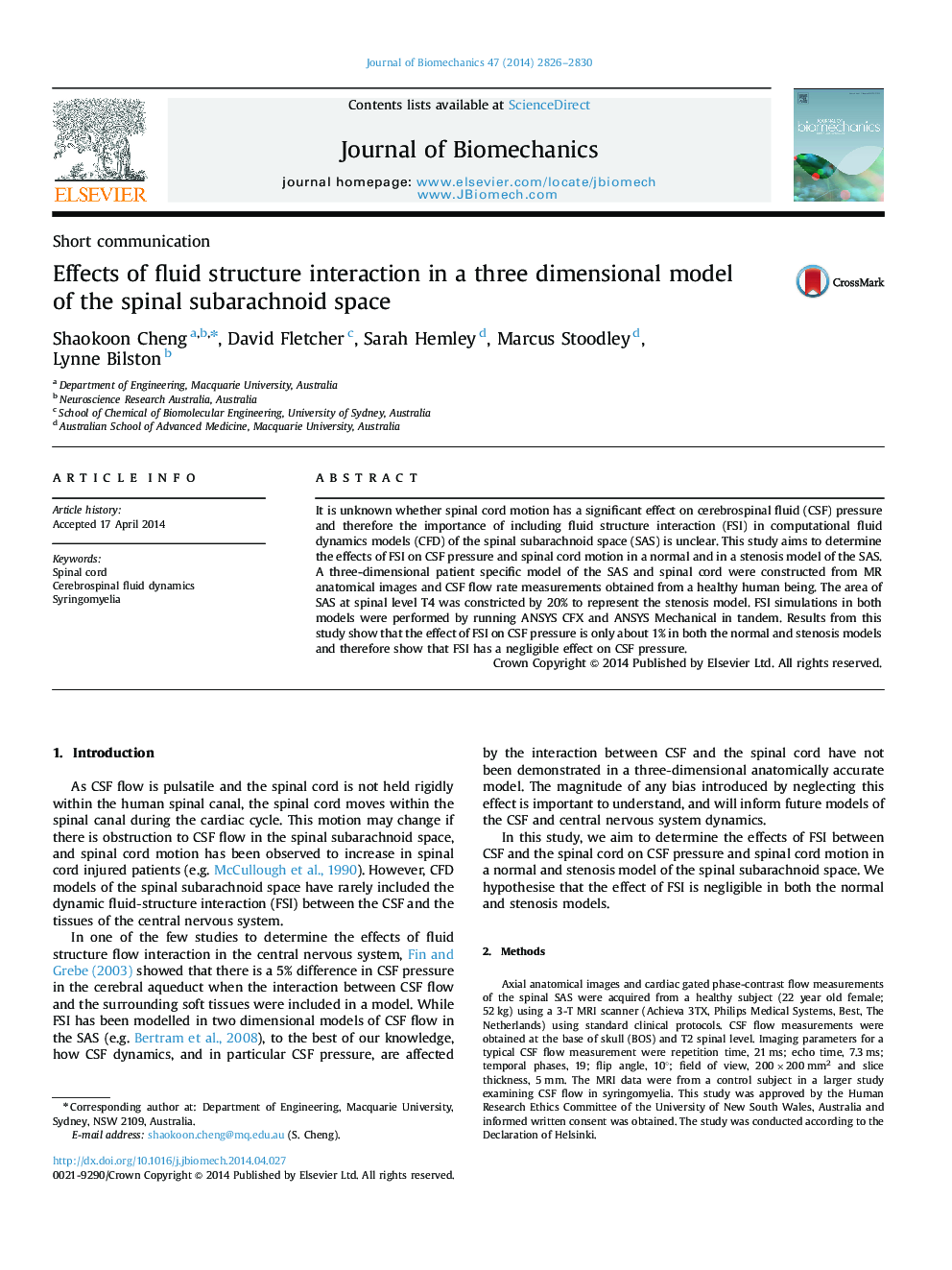| Article ID | Journal | Published Year | Pages | File Type |
|---|---|---|---|---|
| 10431881 | Journal of Biomechanics | 2014 | 5 Pages |
Abstract
It is unknown whether spinal cord motion has a significant effect on cerebrospinal fluid (CSF) pressure and therefore the importance of including fluid structure interaction (FSI) in computational fluid dynamics models (CFD) of the spinal subarachnoid space (SAS) is unclear. This study aims to determine the effects of FSI on CSF pressure and spinal cord motion in a normal and in a stenosis model of the SAS. A three-dimensional patient specific model of the SAS and spinal cord were constructed from MR anatomical images and CSF flow rate measurements obtained from a healthy human being. The area of SAS at spinal level T4 was constricted by 20% to represent the stenosis model. FSI simulations in both models were performed by running ANSYS CFX and ANSYS Mechanical in tandem. Results from this study show that the effect of FSI on CSF pressure is only about 1% in both the normal and stenosis models and therefore show that FSI has a negligible effect on CSF pressure.
Related Topics
Physical Sciences and Engineering
Engineering
Biomedical Engineering
Authors
Shaokoon Cheng, David Fletcher, Sarah Hemley, Marcus Stoodley, Lynne Bilston,
